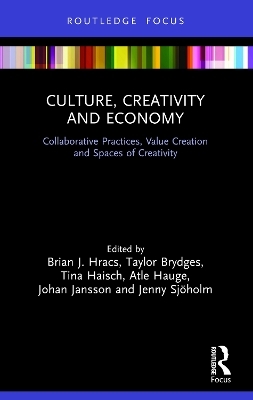
Culture, Creativity and Economy
Routledge (Verlag)
978-1-032-05330-1 (ISBN)
This book nuances our understanding of the contemporary creative economy by engaging with a set of three key tensions which emerged over the course of eight European Colloquiums on Culture, Creativity and Economy (CCE): 1) the tension between individual and collaborative creative practices, 2) the tension between tradition and innovation, and 3) the tension between isolated and interconnected spaces of creativity.
Rather than focusing on specific processes, such as production, industries or locations, the tensions acknowledge and engage with the messy and restless nature of the creative economy. Individual chapters offer insights into poorly understood practices, locations and contexts such as co-working spaces in Berlin and rural Spain, creative businesses in Leicester and the role and importance of cultural intermediaries in creative economies within Africa. Others examine the nature of trans-local cultural flows, the evolving "field" of fashion, and the implications of social media and crowdfunding platforms.
This book will be of interest to students, scholars and professionals researching the creative economy, as well as specific cultural and creative industries, across the humanities and social sciences.
Brian J. Hracs is Associate Professor of Human Geography at the University of Southampton, UK. He is interested in how digital technologies and global competition are reshaping the creative economy. Taylor Brydges is a postdoctoral researcher at Stockholm University, Sweden and the Institute for Sustainable Futures at the University of Technology Sydney. Her research interests include economic competitiveness and entrepreneurship in the cultural and creative industries, and sustainability and the circular economy. Tina Haisch is Professor for Innovation and Space at University of Applied Sciences and Arts Northwestern Switzerland. Her research focuses on processes of valuation in creative and cultural industries, how cities and regions transform through arts and culture and which role societal values play. Atle Hauge is Professor in Service Innovation at Inland Norway University of Applied Sciences. From 2015 to 2019 he was the leader of Knowledge Works – the Norwegian national Centre for Cultural Industries. He has worked on several projects on the cultural industries, and his PhD thesis was on the Swedish fashion industry. Other research interests are service innovation, digitisation and regional development. Johan Jansson is Associate Professor at the Department of Social and Economic Geography, Uppsala University. Jansson's research concerns the spatial organisation of (economic) activities, spatially and socially embedded processes (e.g. knowledge, creativity, values) and how technology alter distance/proximity dynamics. Jenny Sjöholm is Lecturer at Linköping University in Sweden at the Department for Technology and Social Change. Her research is found in the area of geohumanities and concerns the geographies, politics and practices of contemporary art, cultural work and digitization.
1. Introduction: Exploring tensions in the creative economy 2. The field of fashion in the digital age: Insights from global and ‘not-so-global’ fashion centres 3. Creative Splintering and Structural Change in Leicester, UK 4. Crowdfunding and co-creation of value: the case of the fashion brand Linjer 5. Intermediaries, Work and Creativity in Creative and Innovative Sectors- The Case of Berlin 6. Technology as a source for creativity: Insights from the Swiss fashion industry 7. Assessing values of cultural heritage and museums: A holistic framework 8. Spatial processes of translation: how coworking diffused from urban to rural environments. The case of Cowocat in Catalonia, Spain 9. Cultural Intermediaries Revisited: Lessons from Cape Town, Lagos and Nairobi 10. Curated by pioneers, spaces and resistance: The development of electronic dance music in Stockholm
| Erscheinungsdatum | 06.08.2021 |
|---|---|
| Reihe/Serie | The Dynamics of Economic Space |
| Zusatzinfo | 11 Tables, black and white; 2 Line drawings, black and white; 8 Halftones, black and white; 10 Illustrations, black and white |
| Verlagsort | London |
| Sprache | englisch |
| Maße | 138 x 216 mm |
| Gewicht | 453 g |
| Themenwelt | Naturwissenschaften ► Geowissenschaften ► Geografie / Kartografie |
| Technik | |
| Wirtschaft ► Volkswirtschaftslehre | |
| ISBN-10 | 1-032-05330-5 / 1032053305 |
| ISBN-13 | 978-1-032-05330-1 / 9781032053301 |
| Zustand | Neuware |
| Haben Sie eine Frage zum Produkt? |
aus dem Bereich


